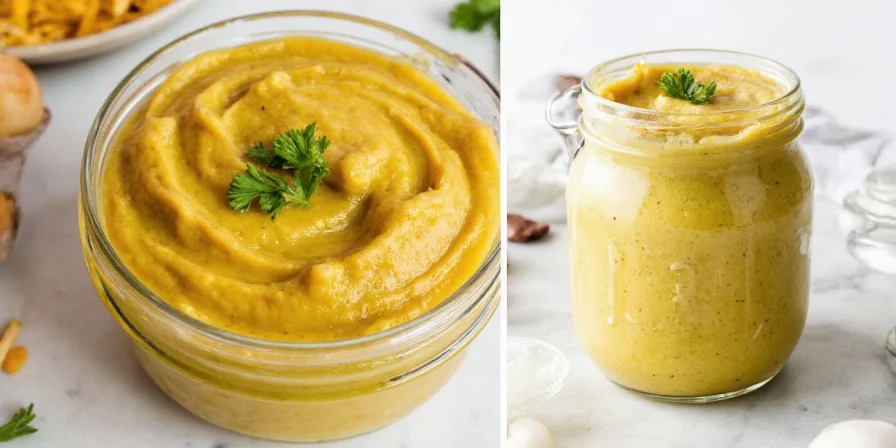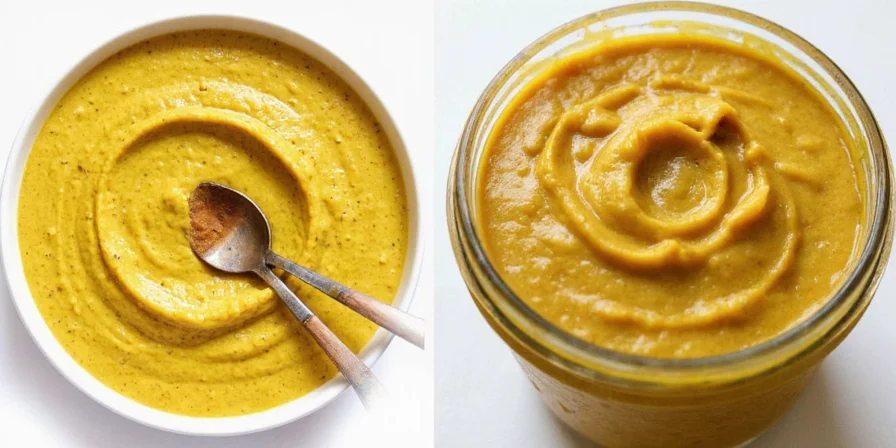Table of Contents
- Quick Answer: Basic Homemade Mustard Recipe
- Essential Mustard Ingredients Explained
- 10 Simple Mustard Recipes Anyone Can Make
- Pro Tips for Perfect Mustard Every Time
- Why Mustard Works: Simple Flavor Science
- How to Store Homemade Mustard Properly
- Common Mustard Questions Answered
- Next Steps for Mustard Success
Quick Answer: Basic Homemade Mustard Recipe
Here's the simplest way to make delicious homemade mustard in 5 minutes: Combine 1/4 cup yellow mustard seeds, 1/4 cup vinegar, 1 tablespoon salt, and 1/2 cup water in a jar. Shake well, refrigerate overnight, and enjoy! This basic recipe creates a smooth, tangy mustard perfect for sandwiches, burgers, and sauces. For creamier texture, blend after 24 hours. The secret to great homemade mustard is patience - flavors develop significantly over 48 hours.

Essential Mustard Ingredients Explained
Understanding these core ingredients ensures success with any mustard recipe:
- Mustard seeds: Yellow seeds create mild flavor, brown seeds add heat, black seeds provide intense pungency
- Vinegar: White vinegar gives classic tang, apple cider offers mellow acidity, wine vinegars add complexity
- Salt: Activates enzymes and enhances flavor (use 1 tbsp per 1/4 cup seeds)
- Sweeteners: Honey or sugar balances sharpness (1-2 tbsp per recipe)
- Water: Controls thickness - less water creates stronger mustard

| Seed Type | Flavor Result | Best For | Prep Tip |
|---|---|---|---|
| Yellow | Mild, classic flavor | Sandwiches, deviled eggs | Ready in 24 hours |
| Brown | Medium heat, complex | Meat glazes, sauces | Soak 8 hours first |
| Black | Strongest heat | Specialty recipes | Use sparingly (15% of mix) |
10 Simple Mustard Recipes Anyone Can Make
These foolproof recipes deliver restaurant-quality results with pantry staples. Each makes one standard jar (about 1 cup):
1. 5-Minute Classic Yellow Mustard
- 1/4 cup yellow mustard seeds
- 1/4 cup white vinegar
- 1 tbsp salt
- 1 tsp turmeric
- 1/2 cup water
Method: Combine all ingredients in jar, shake well. Refrigerate 24 hours before using. Stir before serving.

2. Honey Mustard (Kid-Friendly)
- 1/4 cup yellow seeds
- 3 tbsp honey
- 2 tbsp apple cider vinegar
- 1/2 cup water
- 1 tsp salt
3. Dijon-Style Mustard
- 1/3 cup brown seeds
- 1/4 cup white wine
- 1 tbsp honey
- 1 tsp salt
- 1/2 cup water
4. Whole Grain Mustard
- 1/3 cup brown seeds (1/2 left whole)
- 1/4 cup red wine vinegar
- 1 tbsp salt
- 1/2 cup water
5. Spicy Brown Mustard
- 1/4 cup brown seeds
- 1/4 cup beer
- 2 tbsp apple cider vinegar
- 1 tsp salt
- 1/4 cup water

6. Maple-Balsamic Mustard
- 1/3 cup black mustard seeds
- 1/4 cup balsamic vinegar
- 2 tbsp maple syrup
- 1/2 cup water
- 1 tsp salt
7. Garlic Herb Mustard
- 1/4 cup yellow seeds
- 1/4 cup white vinegar
- 2 cloves garlic, minced
- 1 tbsp chopped fresh herbs
- 1 tsp salt
- 1/2 cup water

8. Smoky Chipotle Mustard
- 1/3 cup brown seeds
- 1/4 cup apple cider vinegar
- 1 chipotle pepper in adobo, minced
- 1 tsp salt
- 1/2 cup water
9. Curry Mustard
- 1/4 cup yellow seeds
- 1/4 cup rice vinegar
- 1 tbsp curry powder
- 1 tsp salt
- 1/2 cup water
10. Honey-Bourbon Mustard
- 1/4 cup yellow seeds
- 2 tbsp apple cider vinegar
- 3 tbsp bourbon
- 2 tbsp honey
- 1 tsp salt
Pro Tips for Perfect Mustard Every Time
Avoid common mistakes with these practical techniques:
- For smooth texture: Blend after 24 hours, not immediately
- To reduce bitterness: Let sit 48 hours before final tasting
- For stronger flavor: Use less water (try 1/3 cup instead of 1/2)
- To fix too-thin mustard: Add 1 tsp extra seeds and wait 12 hours
- For best results: Store in refrigerator for 3 days before using
- Customize heat level: Mix yellow and brown seeds (50/50 for medium heat)

Why Mustard Works: Simple Flavor Science
You don't need to be a chemist to make great mustard. Here's what actually matters:
- Mustard gets hotter the first 24 hours, then mellows over time
- Vinegar slows the heat development (great for beginners)
- Water creates immediate heat that fades faster
- Sweeteners balance sharpness - add more if too spicy
- Flavor peaks at 72 hours - that's when to use it
Don't worry about precise temperatures - room temperature storage for the first day works perfectly for home cooks.
How to Store Homemade Mustard Properly
Follow these simple storage guidelines for safe, flavorful mustard:
- First 24 hours: Keep at room temperature in sealed container
- After 24 hours: Transfer to refrigerator
- Shelf life: 3-4 months in refrigerator
- Separation fix: Simply stir - this is normal
- Best containers: Glass jars with tight lids (avoid metal)

Common Mustard Questions Answered
Why does my mustard taste bitter?
Bitterness fades after 48 hours. Most homemade mustard improves significantly after 2-3 days of resting. If still too bitter, add 1 tsp honey and wait 12 hours.
Can I use lemon juice instead of vinegar?
Yes, but expect more immediate heat that fades faster. Lemon juice creates brighter flavor but shorter shelf life. Reduce amount by 25% compared to vinegar recipes.
How do I make mustard less spicy?
Add honey (1 tsp at a time) or increase water content. For immediate use, mix with yogurt or mayo. Remember: heat decreases naturally over 3-5 days.
Is color change normal?
Yes, darkening is natural and doesn't mean spoilage. Discard only if you see mold, smell sourness beyond vinegar, or notice unusual texture changes.
Can I double the recipe?
Yes, but maintain exact seed-to-liquid ratios. Larger batches need more thorough mixing. Don't double resting time - 48 hours is sufficient regardless of batch size.
Why use multiple seed types?
Combining seeds creates layered flavor. Yellow seeds provide base flavor, brown seeds add complexity. Try 75% yellow + 25% brown for perfect beginner balance.
Next Steps for Mustard Success
Start with the basic 5-minute recipe - you'll have homemade mustard ready tomorrow. The real secret isn't complicated chemistry but understanding these three principles: 1) Mustard improves with time, 2) Vinegar controls heat development, 3) Small ingredient changes create big flavor differences. After your first batch, experiment with one variation at a time. Within weeks, you'll develop your signature mustard that beats any store-bought version. The best part? You'll never wonder what's in your condiments again. Your journey to better sandwiches, burgers, and sauces starts with one simple jar.











 浙公网安备
33010002000092号
浙公网安备
33010002000092号 浙B2-20120091-4
浙B2-20120091-4